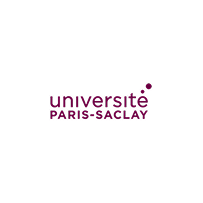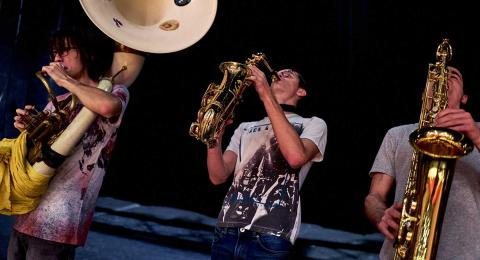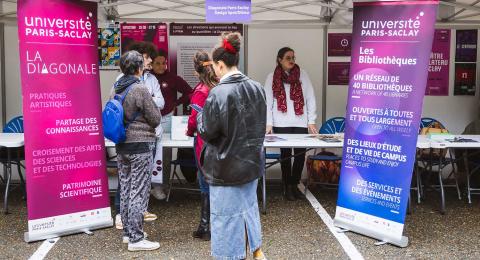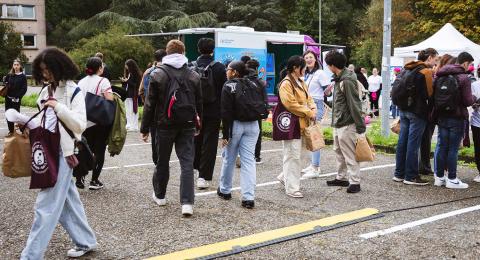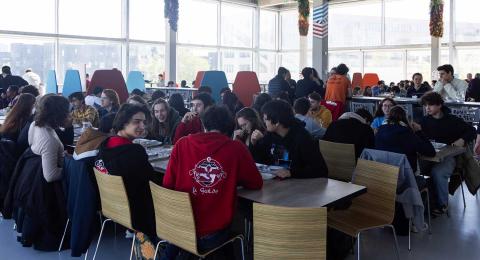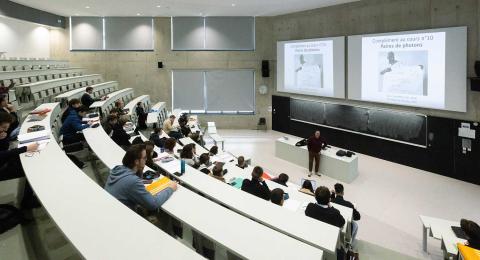General training in plasma physics, with applications ranging from space to the laboratory
Information
Skills
Master and apply specialized knowledge of physics with the necessary scientific rigor.
Objectives
The Master “Physics of Plasmas and Fusion” (PPF) is the only generalist Master in France which offers fundamental basis in plasma physics and whose objective is to train high level scientists and engineers, capable of invest in research programs on plasmas, whether natural or artificial, cold or hot, diluted or dense. This Master offers students wide possibilities of choice and orientation among many themes of plasma physics, allowing them to build step by step their professional project throughout the academic year. It is common to various establishments including the Paris-Saclay University (UPSAy), the University Sorbonne Université (SU) and the Polytechnic Institute of Paris (IPP). The academic year is structured in different parts. After fundamental lectures given to all students to introduce the plasma physics’ basic notions (common core), optional courses dealing with the different themes of the discipline are offered to them: natural plasmas’ physics (Space Plasmas and Astrophysics), process plasmas (so-called “industrial” plasmas), thermonuclear plasmas (magnetic or inertial fusion plasmas) or plasmas from laser-matter interactions, a more detailed description of which is given below. All of these courses are introduced both theoretically and fundamentally, but also from the point of view of experimentation, numerical simulation and modeling. They allow students to acquire expertise in different multidisciplinary fields (plasma/health, plasma/environment, plasma/energy, plasma/space, …), but also to be introduced to the most current innovative technologies and major international and national projects such as the Tokamak ITER, the MegaJoule, Apollon or Petal lasers, or even present and future space missions (Parker Solar Probe / NASA, Solar Orbiter ESA / NASA, …). These optional thematic lectures are followed by so-called "specialization" courses, which allow students to deepen their knowledge in a more specific way and in the perspective of their research internship of 4-5 months. This internship can be carried out in a research laboratory in France or abroad, in the academic environment or with an industrial partner. It completes the Master, which then opens onto a PhD (for the majority of students) or directly onto a job in the industry.
Career Opportunities
Further Study Opportunities
Thèse de doctorat
Fees and scholarships
The amounts may vary depending on the programme and your personal circumstances.
Capacity
Available Places
Target Audience and Entry Requirements
M1 in Physics or engineer school diploma
Application Period(s)
From 15/03/2026 to 15/07/2026
Supporting documents
Compulsory supporting documents
Copy of identity document.
Motivation letter.
All transcripts of the years / semesters validated since the high school diploma at the date of application.
Curriculum Vitae.
Detailed description and hourly volume of courses taken since the beginning of the university program.
Additional supporting documents
VAP file (obligatory for all persons requesting a valuation of the assets to enter the diploma).
Document indicating the list of local M2 choices available here : https://urlz.fr/i3Lo.
Supporting documents :
- Residence permit stating the country of residence of the first country
- Or receipt of request stating the country of first asylum
- Or document from the UNHCR granting refugee status
- Or receipt of refugee status request delivered in France
- Or residence permit stating the refugee status delivered in France
- Or document stating subsidiary protection in France or abroad
- Or document stating temporary protection in France or abroad.

